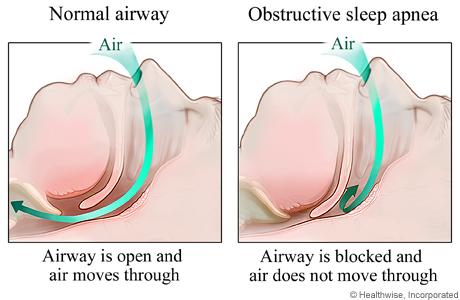Obstructive Sleep Apnea
by Sleep apnea
Posted on 10-09-2021 04:04 am

What's Obstructive sleep apnea ?
30 million Americans may suffer from obstructive sleep apnea, or OSA. It is more common than adult diabetes and asthma, affecting 24% of men and 9% of women between the ages of 30 to 60 years of age. OSA is even more common in overweight people and persons older than 60 years of age. It is a major risk factor for the development of cardiovascular disease.
Studies show that 80% of difficult to control hypertension, 50% of congestive heart failure, and 60% of strokes are related to undiagnosed OSA. Apnea means without breath, if you have obstructed sleep apnea you literally stop breathing while you're asleep. The apnea can last for a few seconds to a minute or more, as many as 100 of times during the night.
Forms of sleep apnea include obstructive, central and mixed with obstructive being the most common type. OSA prevents you from reaching deep stages of sleep, which the body needs to rest and replenish itself.
Causes of Obstructive Sleep Apnea. Even though the exact cause of OSA remains unclear, the sleep disorder follows a pattern. During the day muscles keep the airway passages wide open. When a person with OSA falls asleep, these muscles relax to a point where the airway collapses and causes a breathing pause. These breathing pauses occur because of a blockage in the upper airway.
Usually when the soft tissue in the upper airway or rear of the throat collapses. When the airway closes, breathing stops and the sleeper wakes up to open the airway.
The sleeper then returns to sleep and the breathing pause occurs again. This pattern is repeated until you wake up for the day. Symptoms of Obstructive Sleep Apnea.
OSA is most commonly seen in overweight people with loud snoring, breathing pauses, usually noticed by the bed partner, daytime sleepiness, thrashing around in bed, morning headaches, a dry mouth in the morning, and gasping for breath at night. Loud snoring and daytime sleepiness are the most common of these complaints. Other symptoms of OSA include memory problems, as well as difficulty concentrating and thinking. Anxiety, depression, irritability, and aggressive behavior. Many medical complications are associated with obstructive sleep apnea.
These include heart attacks, strokes, high blood pressure, depression, sexual dysfunction, or lack of desire. There's also a substantial increased risk of work place injuries and motor vehicle accidents. Diagnosis of Obstructive Sleep Apnea.
A sleep study, also called a polysomnography can usually diagnose obstructive sleep apnea. Sleep studies are a series of tests that help evaluate what happens to your body while you sleep.
Special healthcare providers perform these tests during an overnight stay at a sleep lab. If you have obstructive sleep apnea, the severity and the most effective treatment can then be determined. Treatment for Obstructive Sleep Apnea. There are many treatment options available if you suffer from OSA. Continuous Positive Airway Pressure or CPAP, is the most widely used one.
The CPAP machine delivers regular room air through a mask. It increases air pressure in the throat. Keeping tissues in the airway from collapsing while you inhale. The airway is now open, and you can breathe normally. OSA can also be treated by surgery.
The type of surgery performed depends on the severity of your obstructive sleep apnea. The most common form of surgery is a uvulo palato pharyngo plasty.
Better known as UPPP. The UPPP allows the surgeon to remove tissue that is causing the airway to block. Other forms of surgery are the laser assisted uvuloplasty, LAUP, somnoplasty, mandibular advancement surgeries, and tracheostomy.
Your dentist can also treat OSA with an oral dilator or a mandibular advancement dental device. These devices work by bringing the lower jaw forward, which moves the tongue forward, to create a larger airway. This treatment method is usually safe for patients that snore, or have a mild case of obstructive sleep apnea.
What To Do. Sleep on your side.
Exercise and lose weight. Contact your healthcare provider if your symptoms do not improve with treatment. What Not To Do. Do not smoke. Do not take sleeping pills to assist with sleep.
Do not drink alcohol three hours prior to bedtime. Do not eat large meals before bedtime. Do not use over the counter remedy. Things To Remember. Disruptive sleep apnea is a very treatable problem.
What We Have Learned. Continuous Positive Airway Pressure or CPAP is the most common treatment for obstructive sleep apnea.
Resource : https://www.youtube.com/watch?v=VPwpJd8aBzM